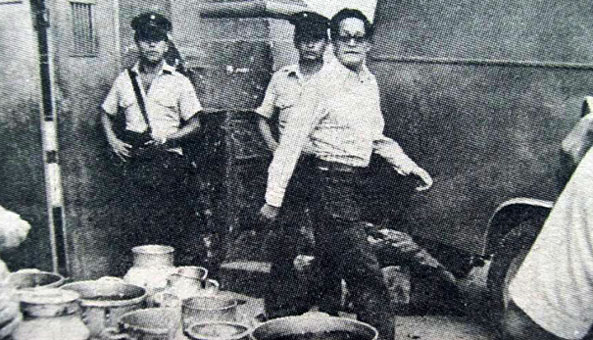
Raised in a modest family, Antonio Díaz Martínez was an agronomist, anthropologist, rural sociologist and respected fighter of the Communist Party of Peru. Born in 1933 in the beautiful lands of Chota, province of the department of Cajamarca in Peru, it was the third of a family of seven children.
He studied at the National University of Trujill for the revolution in Peru during the 1970s and 1980s.
During those years he was able to work as a researcher on agricultural problems in the Inter -American Development Service (SCFI), which led him to work later at the Institute for Agrarian Reform and Colonization in the Apurimarac River section, which allows him to be in daily contact with the peasants of the Ayacuchana jungle.
Díaz Martínez began his revolutionary life in the 1960s being still a student of Sociology and interested in Marxist ideas, whose boom was at its maximum summit due to the international scene. In the year of 1964, Antonio met the comrade Abimael Guzmán who at that time was a professor at the National University of San Cristóbal de Huamanga, who convinced him to join the ranks of the newborn Communist Party of Peru (which would later be called equivocally As a light path), whose purpose was to develop the popular war in the country to conquer power and establish a popular republic as part of the world proletarian revolution.
In his revolutionary activity he met Catalina Adrianzen, - direction of the Popular Women's Movement (MFP) of Peru and PCP militant, in addition to the author of the text Marxism, Mariátegui and the female movement -, with which he married. 1
Due to its revolutionary commitment, its exorbitant knowledge of Peruvian socioeconomic conditions and especially for its inspiring rhetoric quickly was located as a militant with a lot of popularity within the party. It is here that he performed important intellectual tasks through the study of estates and peasant society exhibited in his book Ayacucho: hunger and hope, written in the year of 1969. The one that could be considered as his magna work, is divided into two parts: The first part describes the poor conditions in which the vast majority of the peasants of Ayacucho lived, a territory where Díaz Martínez performed his role as a party commander, and the second, performs a territorial analysis where he infers the possibilities of change in the region to through the armed revolution.
This book contributed to the study of the socio-economic conditions of the Peruvian field at that time, which allowed a theoretical characterization, laying the basis for the formulation of the development and germination plan of what was known as Ila-80 (beginning of the armed struggle , 1980) where the Ayacucho region was the place chosen by the PCP to turn on the spark that would initiate this fervent anti -imperialist, anti -capitalist and especially dignified fight, in command of the party and its top leader Abimael Guzmán. Revolutionary process that would extend from the countryside to the city coming to have fronts in the town center as happened in Lima.
In 1986, Antonio Diaz Martínez was arrested and accused of terrorism. Locked in Lima prison Sixth , and was later transferred to the Lurigancho Prison. He was the victim of extrajudicial murder in the mutiny of the prisoners of the Luminous Combat Trenches, which became known as the massacre of the prisons, which left a balance of 300 inmates murdered, who had given their lives to the revolution and the creation of a better world.
That is why, on his 90th birthday, and 37 years after he was executed by the barbarity of the Peruvian government, we remember a martyr who gave his life to the popular struggle, to the peasant struggle and to the dignity of a subjugated people. Comrade Antonio Díaz Martínez will always be present.
Use :
1 The companion made a semblance that can consult herehttps://www.marxists.org/espanol/tematica/mujer/autores/arianzen/1988/adm_bio.htm